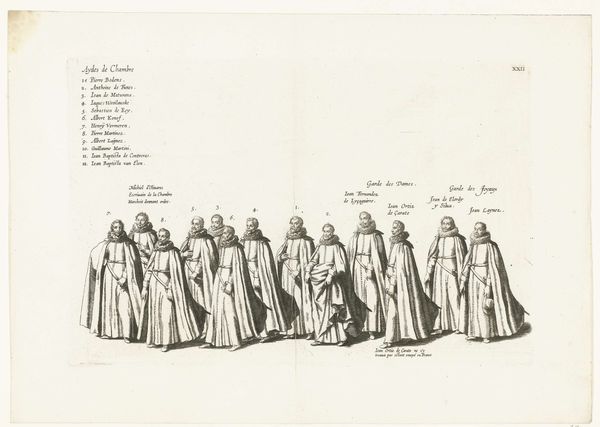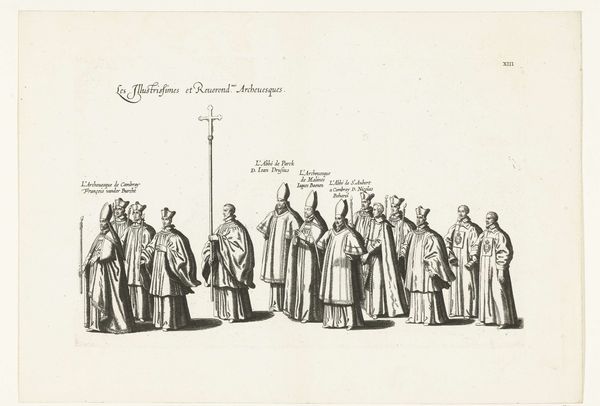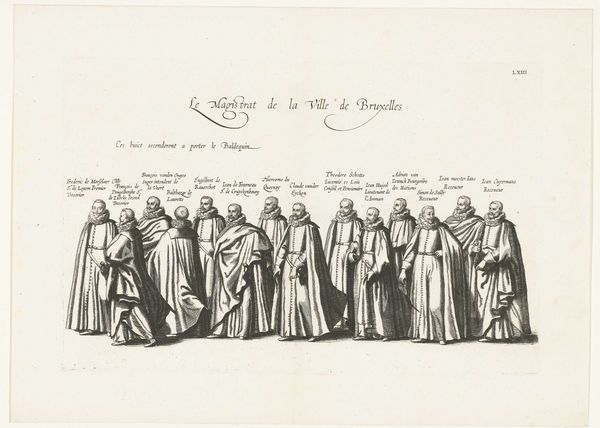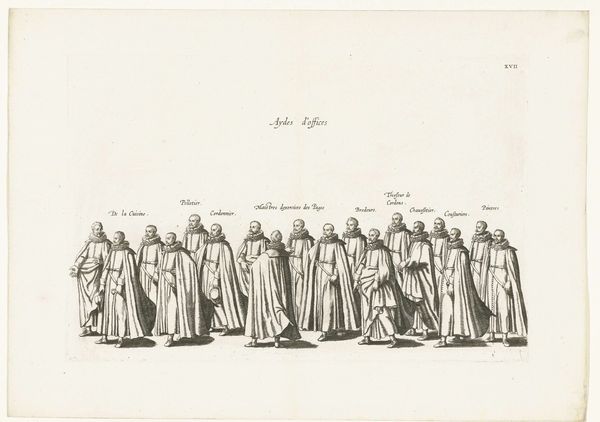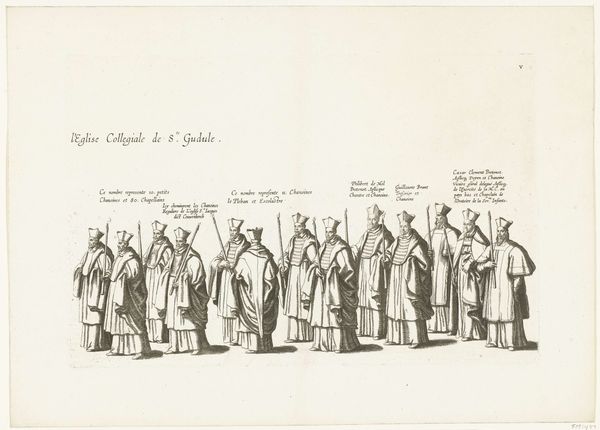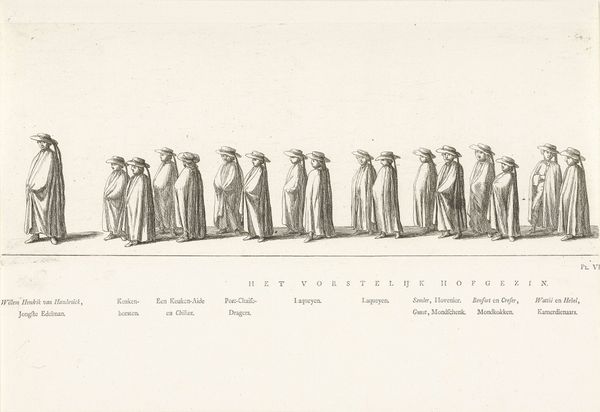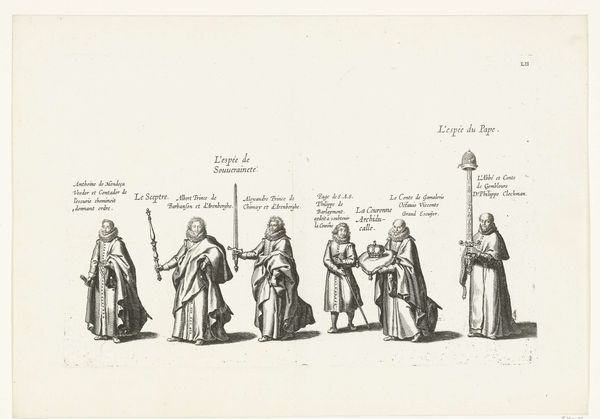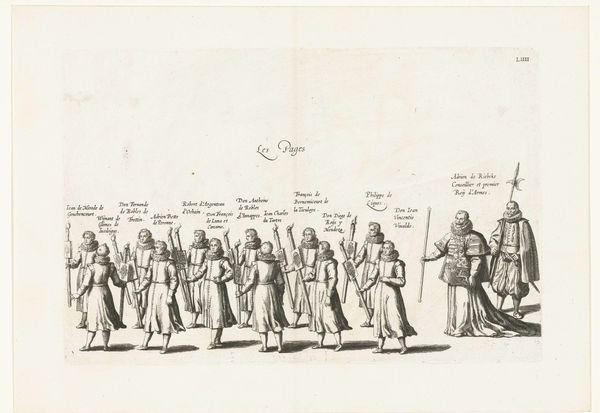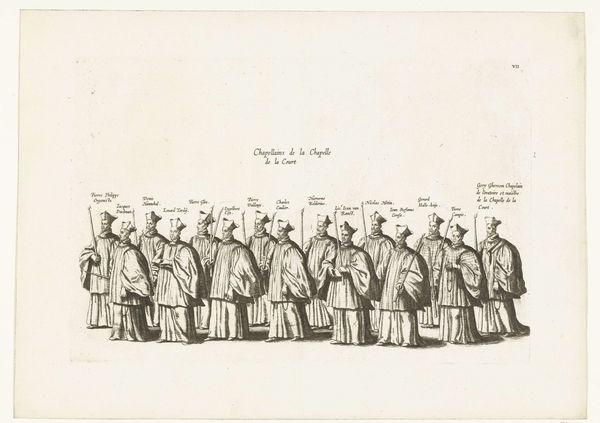
print, engraving
#
portrait
#
baroque
# print
#
pen sketch
#
old engraving style
#
ink drawing experimentation
#
engraving
Dimensions: height 235 mm, width 361 mm
Copyright: Rijks Museum: Open Domain
Cornelis Galle I made this engraving, *Begrafenisstoet van aartshertog Albrecht*, around 1622. He used a technique of cutting lines into a metal plate, applying ink, and pressing paper against it to create an image. Engraving was a precise craft, demanding skill and patience to capture details, seen here in the rendering of the figures and their elaborate robes. This print, part of a series documenting Archduke Albrecht's funeral procession, served as a form of historical record, as well as a display of power. It's a reminder that images like these were not just artistic creations, but tools for shaping public memory and reinforcing social hierarchies. The printmaking process itself mirrors the social context of its time, in which skilled labor was essential to producing works of both artistic and political value. By looking closely at the materials and methods used, we can appreciate how the creation of this image was intertwined with the social and political structures of the 17th century.
Comments
No comments
Be the first to comment and join the conversation on the ultimate creative platform.
